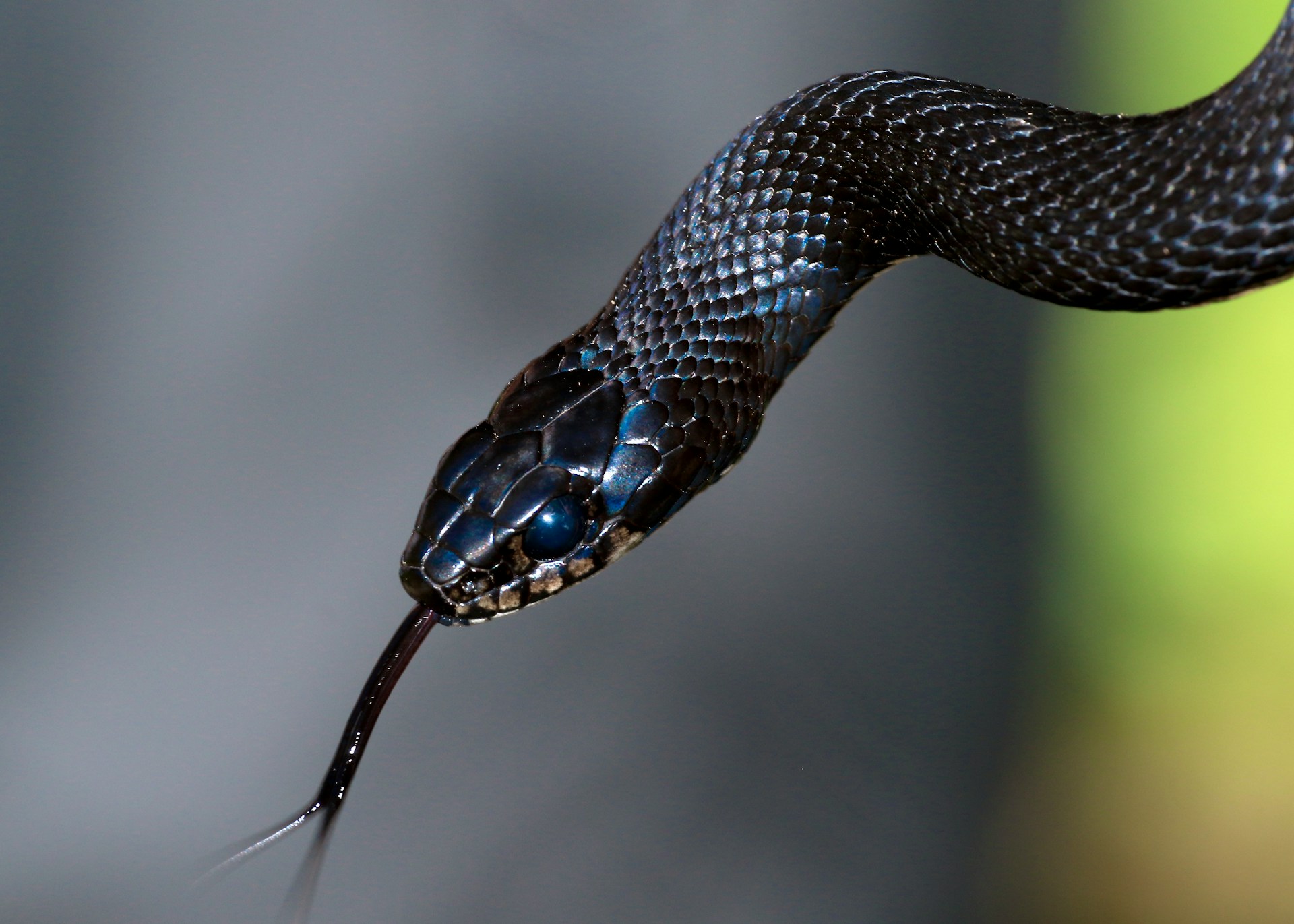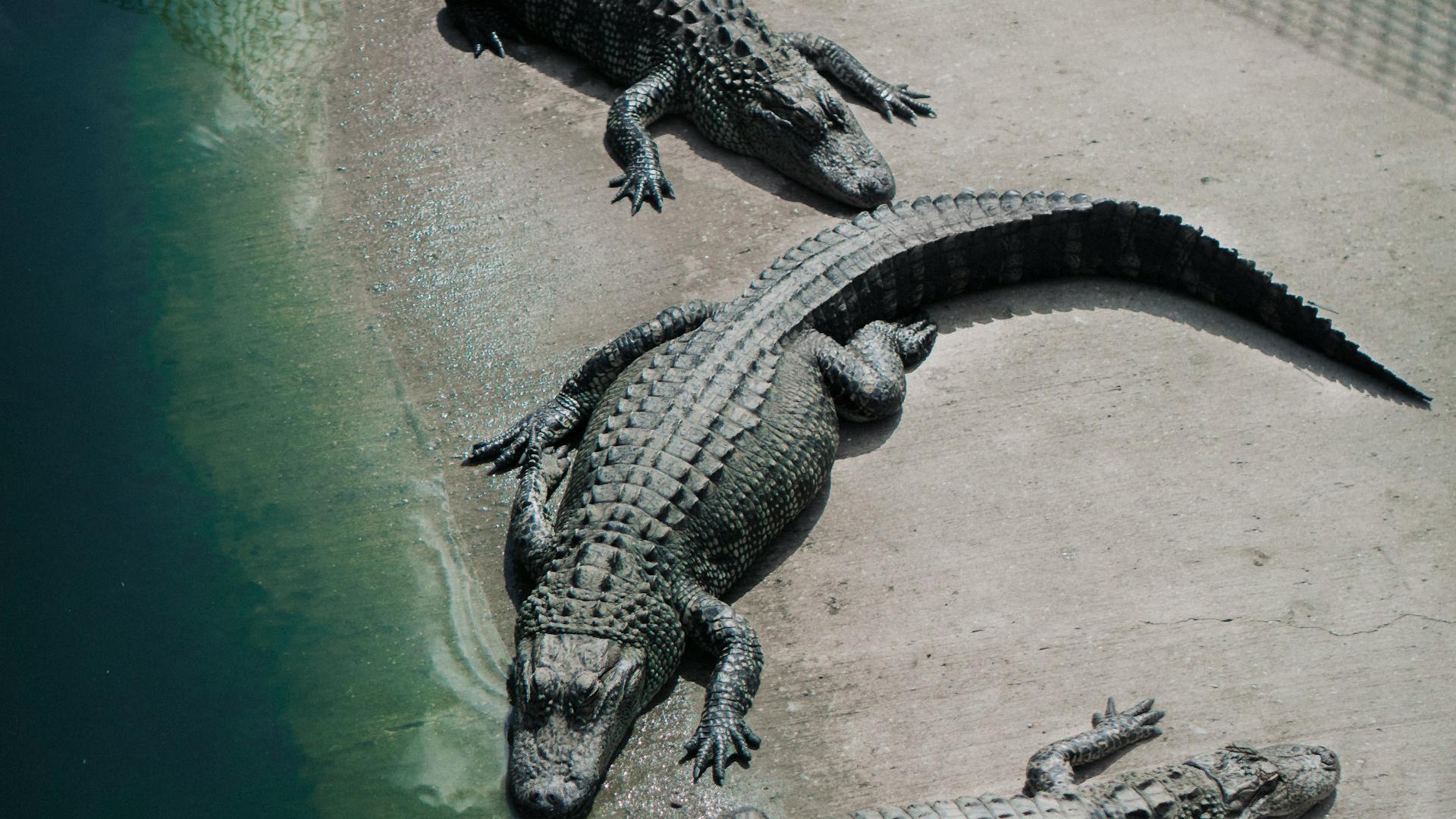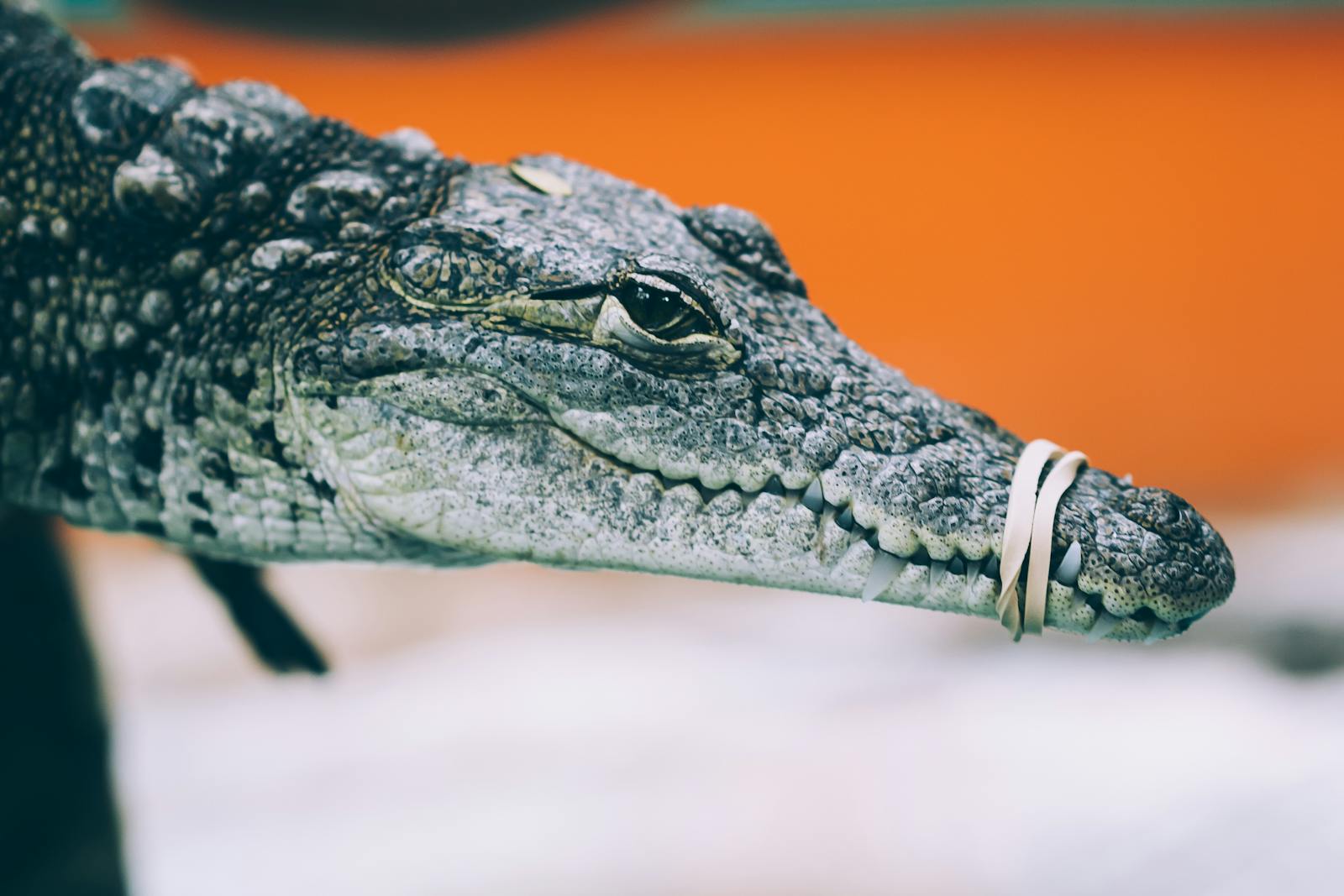Deep in the untamed wilds of Indonesia’s Lesser Sunda Islands, a creature of mythic proportions makes its home. The Komodo dragon, already legendary as the world’s largest living lizard, occasionally produces specimens that defy our expectations of just how massive these ancient reptiles can grow.
While most adult males reach impressive but predictable sizes, throughout history, certain individuals have achieved truly monstrous dimensions.
This article explores the largest Komodo dragon ever documented—a creature so enormous it blurred the line between natural history and legend, challenging our understanding of these remarkable predators and reminding us of nature’s capacity to produce living wonders that captivate our imagination.
The Record-Breaking Giant

The largest verified Komodo dragon ever recorded was a male specimen named “Lolong” that measured an astonishing 10 feet 3 inches (3.13 meters) from snout to tail tip and weighed approximately 366 pounds (166 kilograms).
This behemoth was documented in 2011 at the Komodo National Park in Indonesia by a team of researchers conducting population surveys.
Lolong’s measurements were carefully verified using standardized protocols, including full-body photography with measurement references and weight assessment using specialized portable scales designed for large wildlife.
His exceptional size significantly exceeded the average male Komodo dragon, which typically reaches 8 to 9 feet in length and weighs between 150 to 200 pounds, making him a true outlier even among his impressive species.
Natural History of Komodo Dragons
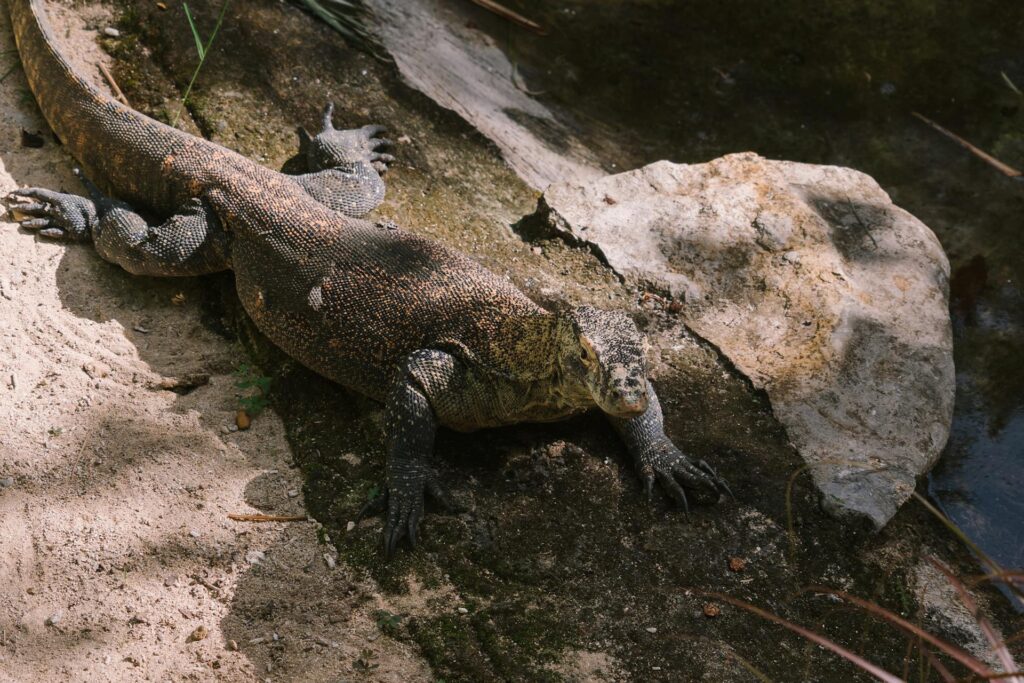
Komodo dragons (Varanus komodoensis) represent an ancient lineage of monitor lizards that evolved in isolation on the Indonesian islands of Komodo, Rinca, Flores, and Gili Motang.
Their evolutionary journey began approximately 4 million years ago, when ancestral monitor lizards became isolated on these islands during periods of changing sea levels.
This isolation, combined with the absence of large mammalian predators, created the perfect conditions for island gigantism—a biological phenomenon where species grow much larger than their mainland relatives when isolated on islands.
Over millions of years, natural selection favored larger individuals that could dominate the available prey resources and defend territories, eventually producing the dragons we know today, whose dimensions harken back to prehistoric times when gigantic reptiles dominated the landscape.
Anatomy of a Monster

The record-breaking Komodo dragon’s anatomy reveals specialized adaptations that enable its enormous size. These massive lizards possess remarkably robust limbs with powerful clawed feet that provide surprising agility despite their bulk, allowing them to achieve short bursts of speed up to 12 mph.
Their skeletal structure features reinforced bones that can support their substantial weight while maintaining the flexibility required for hunting.
The dragon’s muscular tail accounts for nearly half its total length and serves as both a formidable weapon and a counterbalance when moving.
Perhaps most impressive is their capacity for extreme consumption—their expandable stomachs and flexible jaws allow them to swallow enormous amounts of prey (up to 80% of their body weight) in a single feeding, fueling the growth that produces record-breaking specimens like Lolong.
Size Factors: Why Some Grow So Large
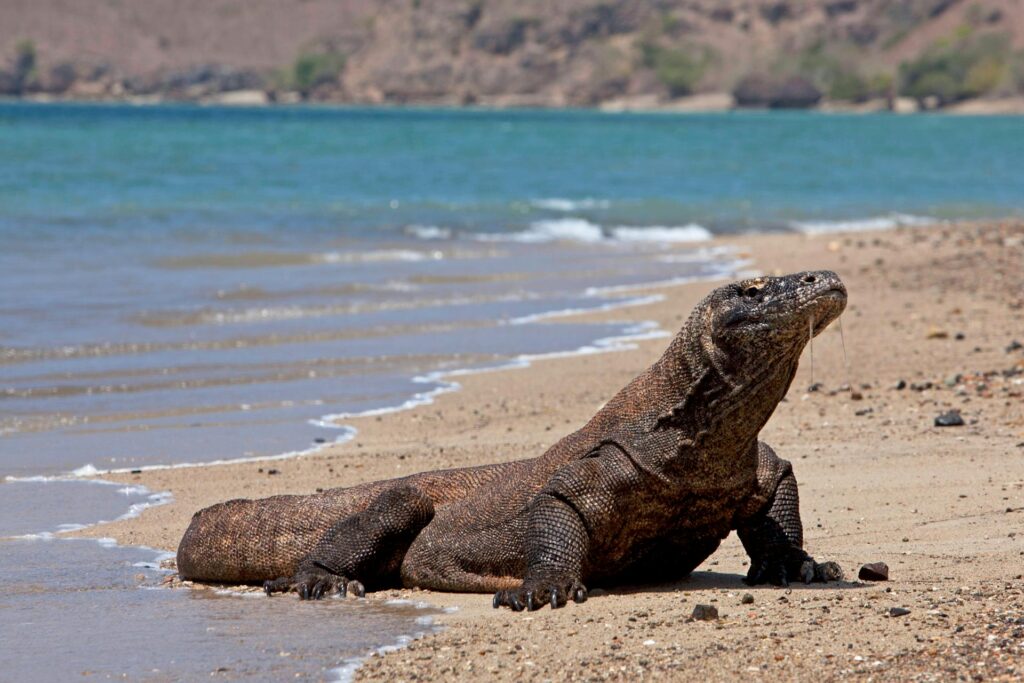
The exceptional growth seen in record-breaking Komodo dragons results from a combination of genetic and environmental factors.
Research suggests that certain genetic lineages carry traits predisposing them to reach greater maximum sizes when conditions are favorable.
Age plays a crucial role—unlike mammals, Komodo dragons exhibit indeterminate growth, continuing to increase in size throughout their 30+ year lifespan, though at a diminishing rate after sexual maturity.
Nutritional factors significantly impact maximum size, with dragons having consistent access to large prey developing more robust dimensions.
Environmental conditions also contribute, with dragons living in protected areas with abundant prey and minimal human disturbance typically achieving greater sizes than those in more stressed habitats.
Males generally grow substantially larger than females due to sexual dimorphism, explaining why record specimens are invariably male.
Hunting and Feeding Capabilities
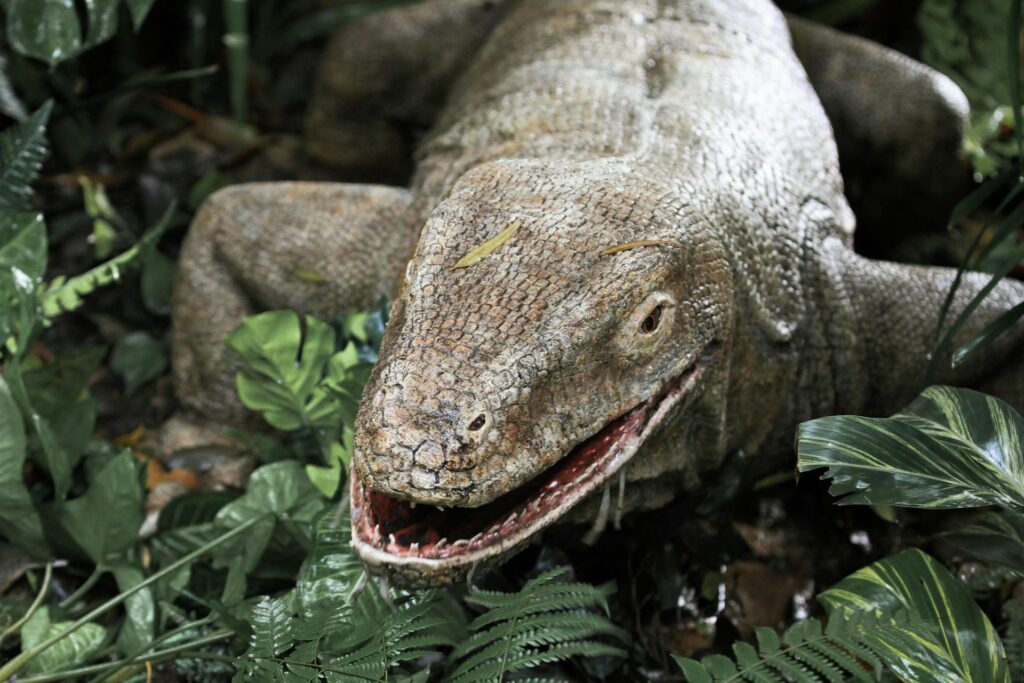
The largest Komodo dragons possess hunting capabilities that border on the terrifying, employing a multifaceted predatory strategy that combines ambush tactics with raw power.
These enormous reptiles can detect prey from up to 2.5 miles away using their highly developed olfactory system, which includes a Jacobson’s organ that processes airborne particles collected by their forked tongues.
When hunting large prey like deer, water buffalo, or even juvenile horses, record-sized dragons rely on their camouflage and patience, sometimes waiting motionless for hours before launching a lightning-fast ambush.
Their serrated, shark-like teeth can inflict devastating wounds, while their specialized salivary glands harbor a complex mixture of toxic proteins and bacteria that induce shock, prevent blood clotting, and cause systemic infection in wounded prey.
This combination of size, stealth, and biological weaponry makes the largest specimens nearly unstoppable predators within their island ecosystems.
Record-Breaking Bites
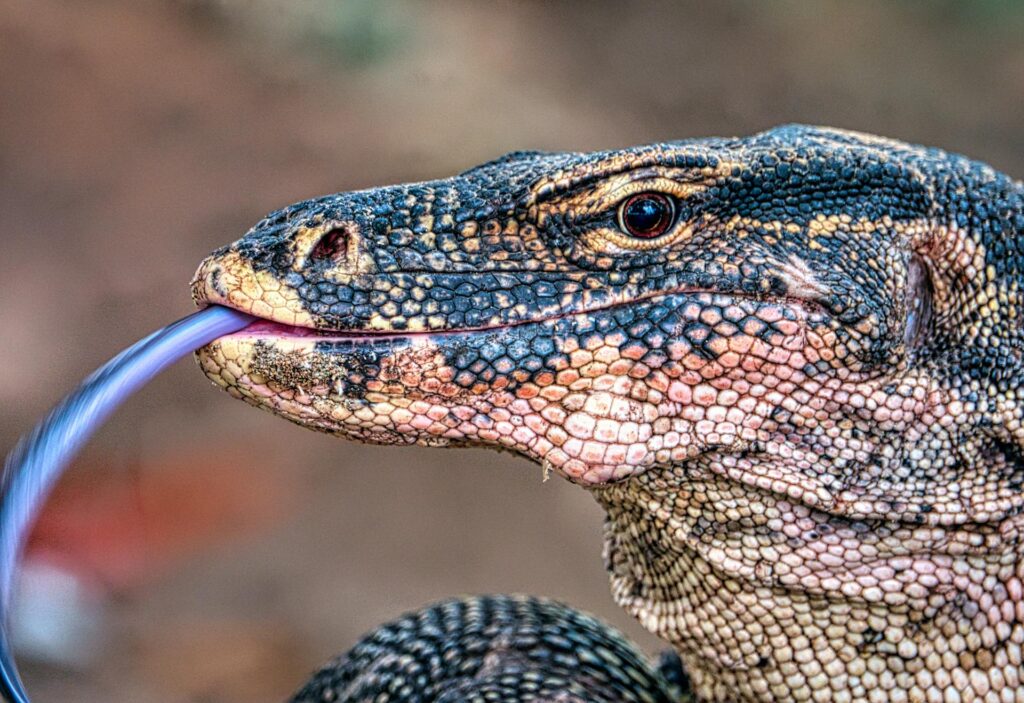
The bite force of the largest Komodo dragons ranks among the most powerful in the reptile world, with research estimating that a specimen the size of Lolong could generate bite forces exceeding 1,200 pounds per square inch (PSI).
This tremendous pressure, combined with their serrated teeth, enables these giant lizards to slice through tough hide, muscle, and even bone with relative ease.
Biomechanical studies of Komodo dragon skulls reveal specialized adaptations that maximize bite force, including reinforced cranial structures and optimized jaw lever mechanics.
The bite of these record-breaking specimens delivers not only mechanical damage but also a payload of toxic compounds that can induce cardiovascular shock, internal bleeding, and eventually death in large prey animals.
Perhaps most impressive is the specialized “bite and pull” feeding technique these monsters employ, using their powerful neck muscles to tear away large chunks of flesh, allowing them to dismantle prey weighing hundreds of pounds in remarkably short periods.
The Island Habitat
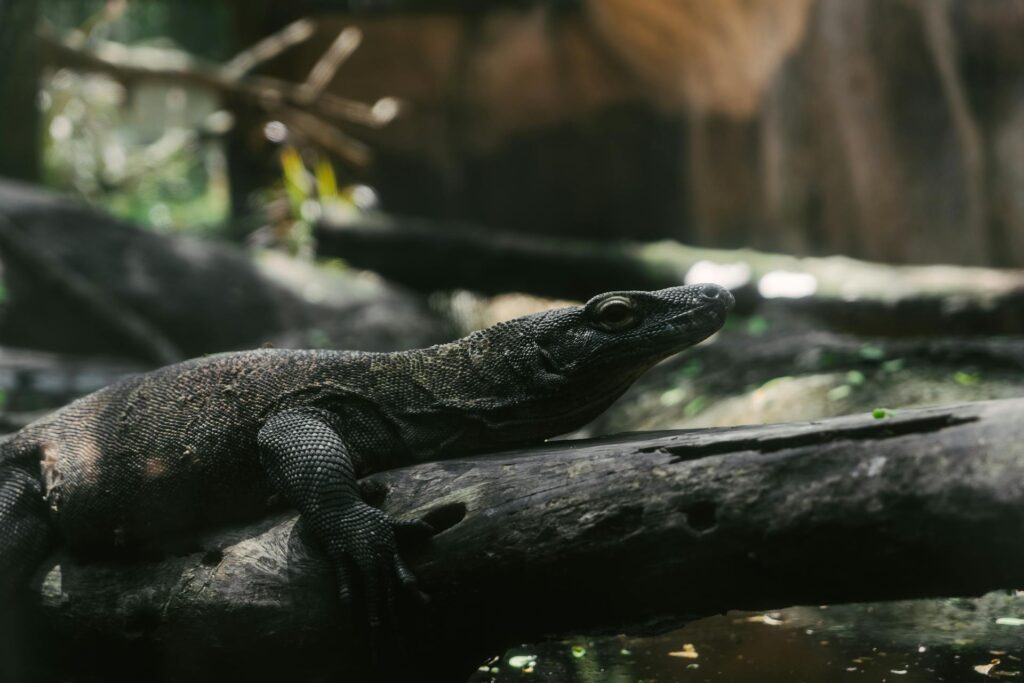
The Indonesian islands that host these record-breaking reptiles create a unique ecological setting that has shaped their evolution.
The archipelago’s volcanic origin has produced rugged landscapes characterized by steep hills, seasonal dry forests, and savannas—terrain that provides perfect ambush opportunities for these apex predators.
Komodo Island itself spans approximately 150 square miles of challenging terrain, offering varied microhabitats that support different prey species throughout seasonal cycles.
The isolated nature of these islands has prevented competition from large mammalian predators, allowing Komodo dragons to evolve into the dominant predatory role.
Climate plays a crucial role in producing giant specimens, with the region’s tropical monsoon climate creating distinct wet and dry seasons that influence prey availability and dragon behavior.
This specialized island ecosystem functions as a time capsule, preserving conditions that have remained relatively stable for millions of years, allowing these ancient reptiles to reach dimensions reminiscent of prehistoric times.
Scientific Documentation Methods
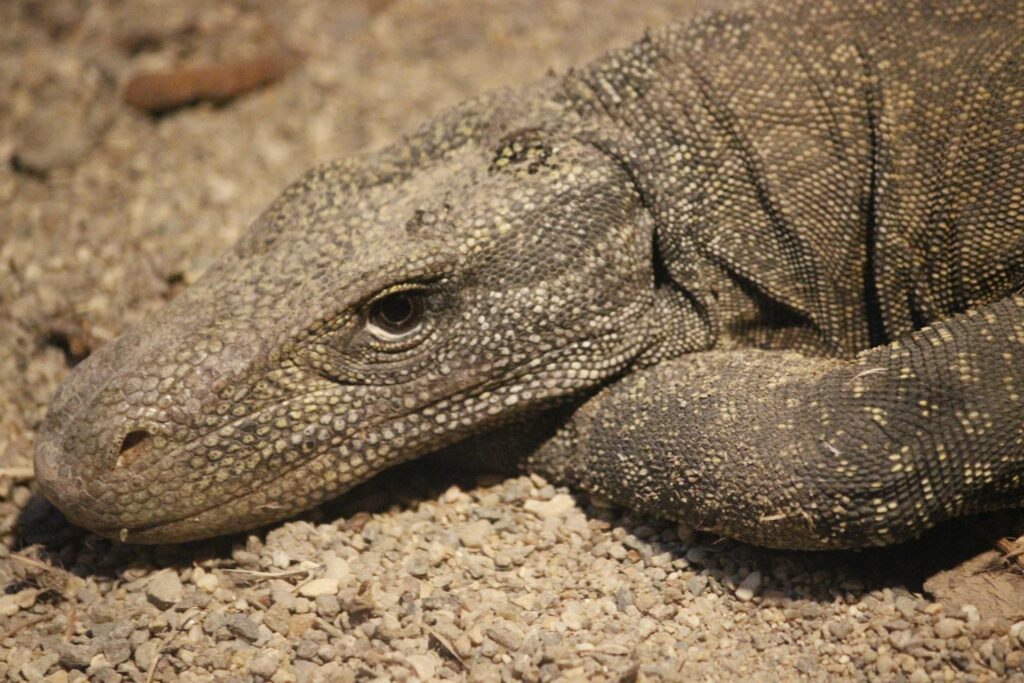
Documenting record-breaking Komodo dragons requires specialized scientific approaches that have evolved significantly over the decades.
Modern researchers employ standardized measurement protocols that include total length measurements taken along the spine from snout tip to tail end, with the specimen positioned in a straight line to ensure accuracy.
Weight assessment involves either custom-designed platform scales brought to the field or, for the largest specimens, special sling-type mechanisms that can safely lift and weigh these dangerous animals during sedation.
Advanced technologies now supplement traditional measurements, including 3D photogrammetry that creates precise digital models from multiple photographs, allowing for detailed morphometric analysis without extended handling of the animal.
DNA sampling has become standard procedure when documenting exceptional specimens, enabling researchers to identify genetic factors that might contribute to extraordinary growth and to track the lineage of these remarkable individuals through the broader population.
Historic Accounts of Giant Dragons
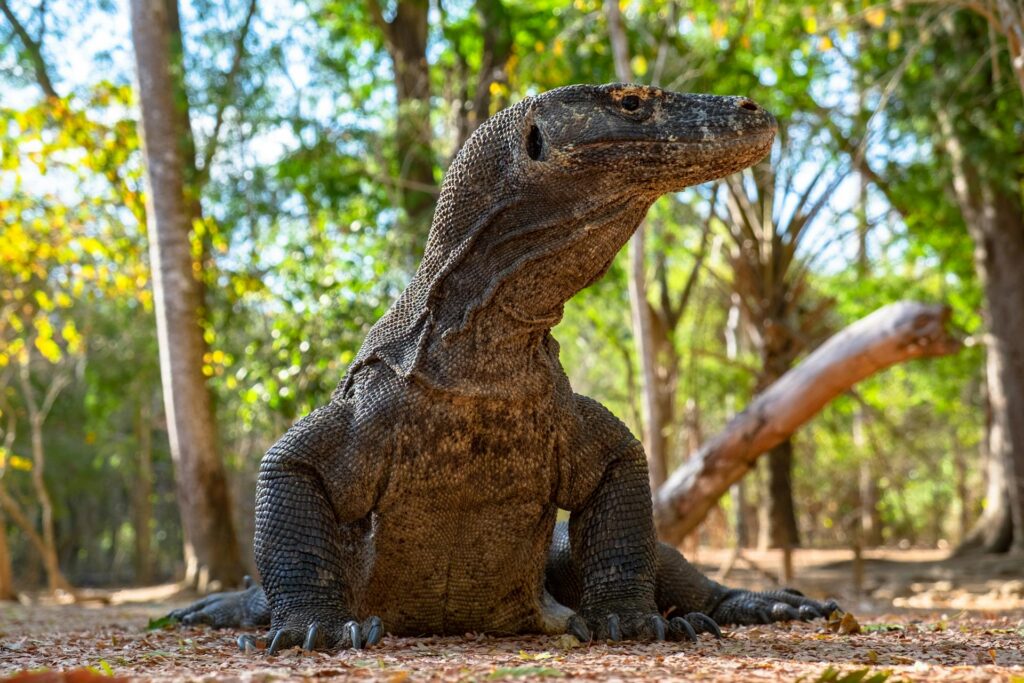
Long before modern scientific documentation, local folklore and early explorer accounts described encounters with monstrous lizards that initially seemed too fantastic to be believed.
Indigenous communities on Komodo and surrounding islands maintained oral traditions describing enormous “ora” (the local name for these lizards) capable of taking down water buffalo and even posing threats to humans.
Western documentation began in 1910 when Dutch colonial administrator Lieutenant van Steyn van Hensbroek investigated these tales, confirming the existence of unusually large monitor lizards on the islands.
The first scientific expedition specifically focused on these dragons was conducted by W. Douglas Burden in 1926, who returned with specimens and documented individuals approaching 10 feet in length.
Throughout the 20th century, various expeditions reported encounters with exceptionally large specimens, though many early measurements lacked the standardization of modern protocols, making precise historical comparisons challenging.
These accounts, spanning centuries, demonstrate the consistent presence of truly enormous individuals within the population.
Conservation Status and Threats
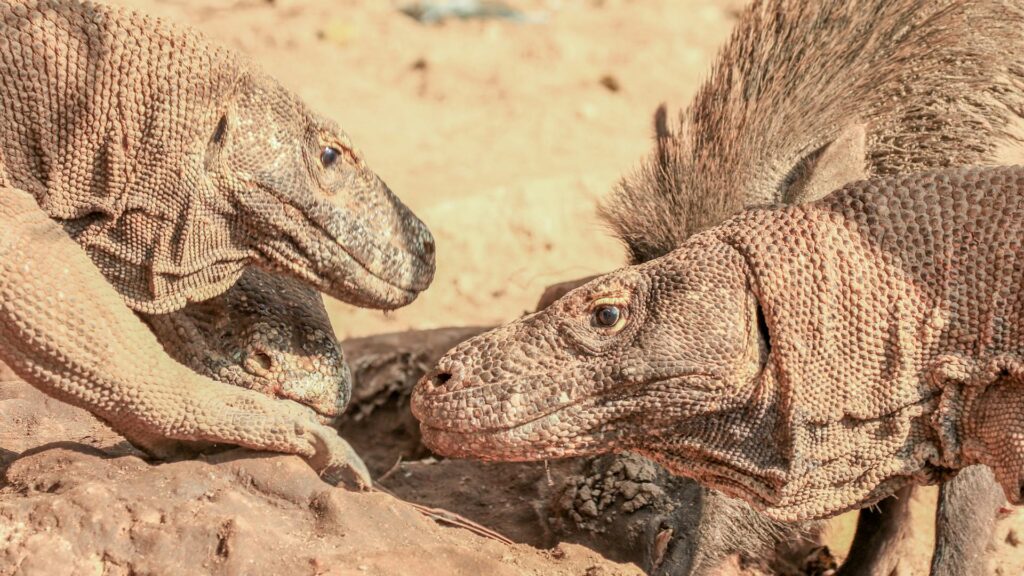
Despite their formidable nature, even the largest Komodo dragons face significant conservation challenges in the modern world.
Currently classified as endangered on the IUCN Red List, their total wild population is estimated at fewer than 3,000 individuals, with numbers continuing to decline.
Habitat loss presents a primary threat, as human development encroaches on their limited island territories, reducing both their range and the prey base needed to support large specimens.
Poaching remains a persistent issue, with large dragons particularly targeted due to their trophy value and use in traditional medicines.
Climate change poses perhaps the most insidious threat, as rising sea levels could eventually submerge significant portions of their low-lying island habitat.
Of particular concern for the development of record-sized dragons is the genetic bottleneck effect—as populations become smaller and more isolated, the genetic diversity necessary to produce exceptional individuals diminishes, potentially reducing the frequency of truly enormous specimens in future generations.
Cultural Significance
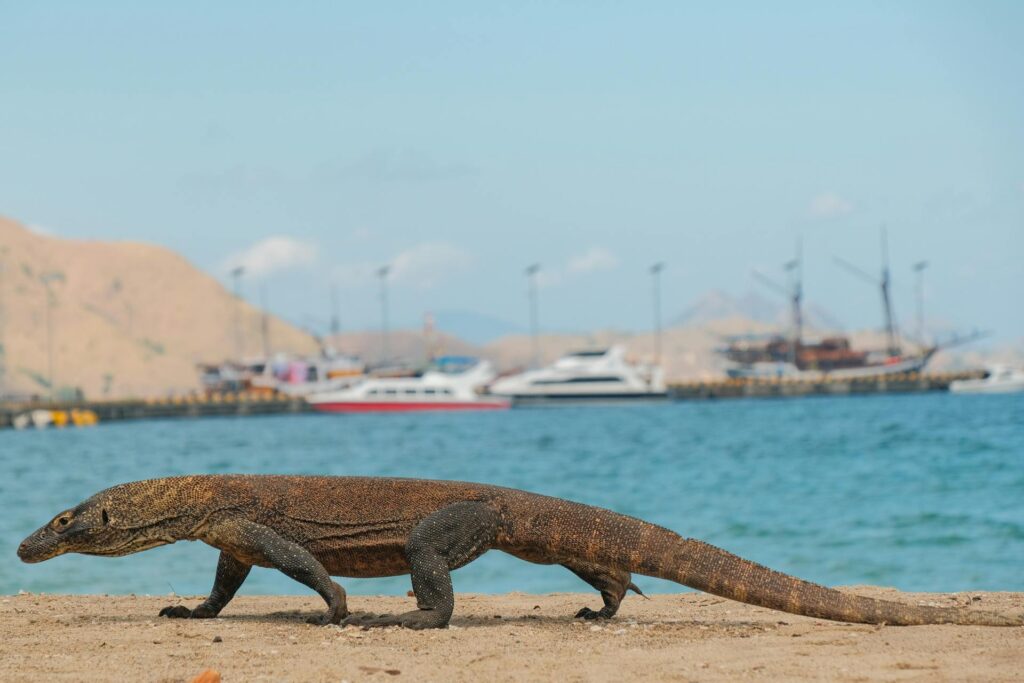
The largest Komodo dragons hold profound cultural significance both locally and globally, representing different values across various contexts.
For the indigenous communities of the Lesser Sunda Islands, these massive reptiles have been woven into creation myths and folklore for centuries, often symbolizing power and ancestral connections.
When exceptionally large specimens are documented, they typically become celebrated individuals within conservation narratives, serving as flagships for protection efforts and generating international media attention that benefits broader conservation initiatives.
Tourism economies in Indonesia have developed around the allure of these remarkable creatures, with visitors traveling from around the world specifically hoping to glimpse the largest specimens in their natural habitat.
In global popular culture, record-breaking Komodo dragons have inspired countless documentaries, films, and books, their prehistoric dimensions capturing human imagination and reinforcing our fascination with creatures that seem to bridge the gap between our world and the ancient past when giants ruled the Earth.
Comparing to Prehistoric Relatives
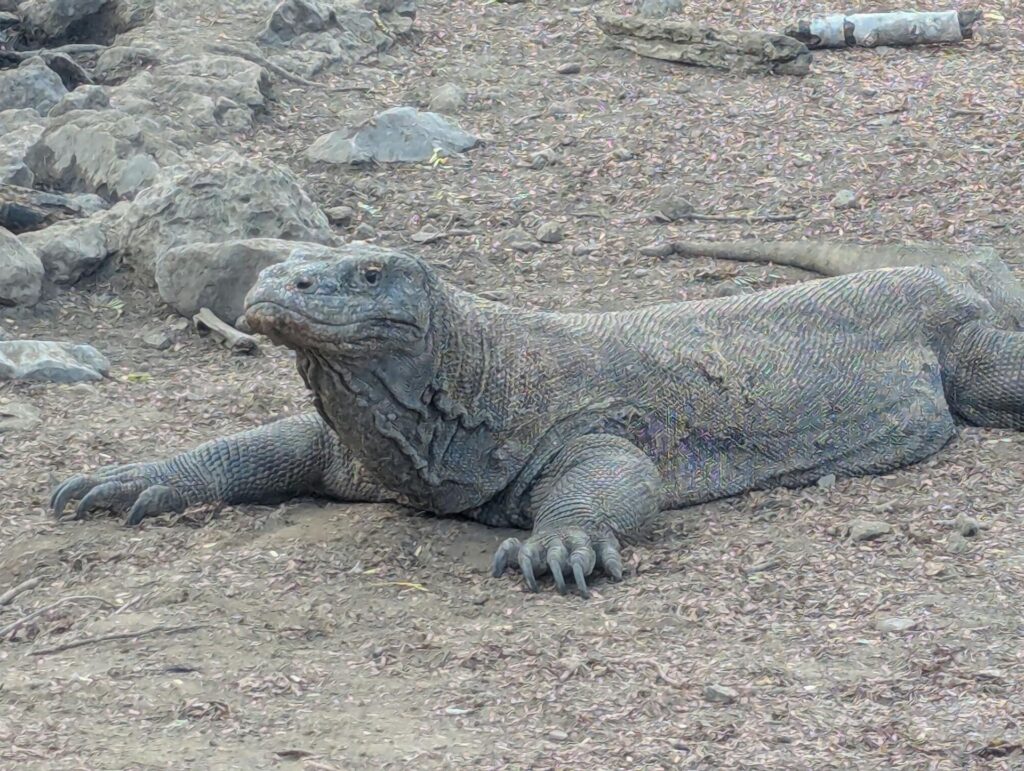
When examining record-sized Komodo dragons, paleontologists note fascinating parallels with their prehistoric relatives that once populated much wider territories.
The largest modern Komodo dragons approach but don’t quite match the dimensions of Megalania (Varanus priscus), an extinct monitor lizard that roamed Australia until approximately 50,000 years ago and may have reached lengths of 15-18 feet.
Fossils indicate that the direct ancestors of today’s Komodo dragons were more widely distributed throughout Southeast Asia and Australia before becoming isolated on their current island homes.
Comparative skeletal analysis between giant modern specimens and fossil relatives reveals remarkable similarities in proportion and specialization, suggesting that today’s record-breakers represent living windows into prehistoric ecological dynamics.
Perhaps most intriguing is the convergent evolution between the largest Komodo dragons and certain dinosaur groups, particularly in terms of their gait, predatory strategies, and ecological niche as large terrestrial predators—making encounters with truly massive specimens the closest experience possible to meeting the dominant reptilian predators of Earth’s distant past.
Future Research Directions
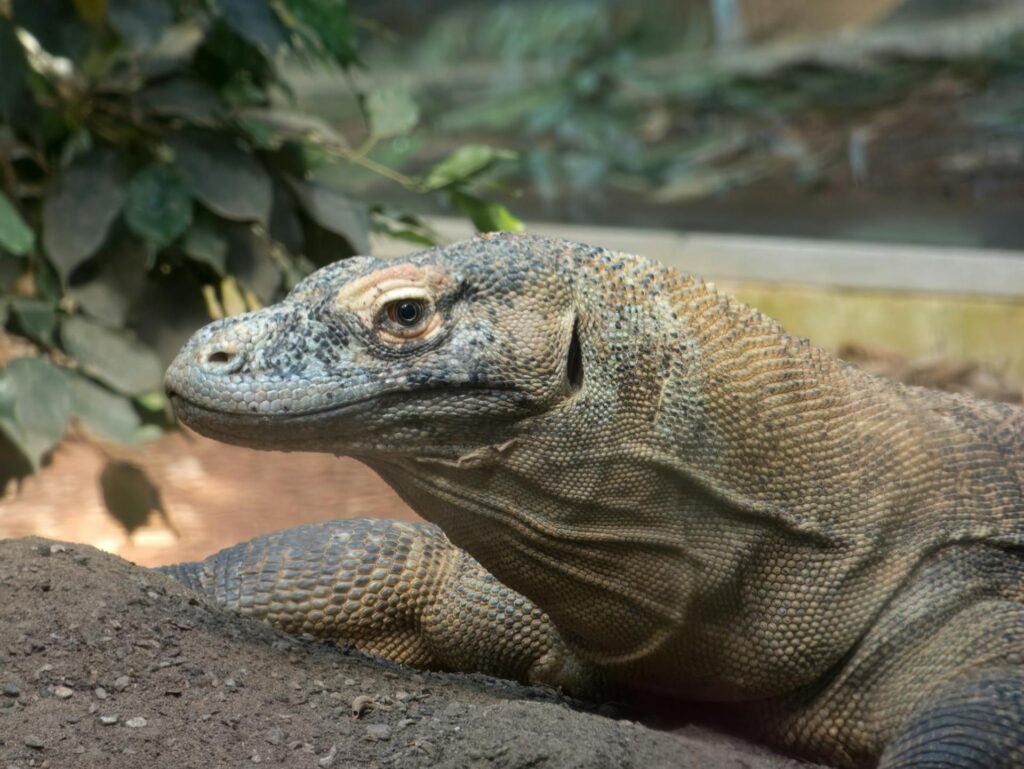
The study of record-sized Komodo dragons continues to evolve, with several promising research directions emerging in recent years.
Genomic studies now focus on identifying the specific genetic factors that enable exceptional growth in certain individuals, with researchers sequencing the DNA of the largest documented specimens to isolate growth-related genes.
Advanced tracking technologies, including satellite-linked GPS devices and accelerometers, are being deployed to understand how the largest dragons utilize their territories and how their hunting strategies differ from average-sized individuals.
Physiological research explores the metabolic adaptations that allow these cold-blooded giants to function effectively despite their massive size, including specialized cardiovascular systems that enable sustained activity.
Perhaps most important for conservation is ongoing research into captive breeding programs specifically designed to maintain the genetic diversity necessary for the continued production of exceptionally large individuals, ensuring that future generations will still witness these magnificent creatures at their most impressive dimensions.
Conclusion
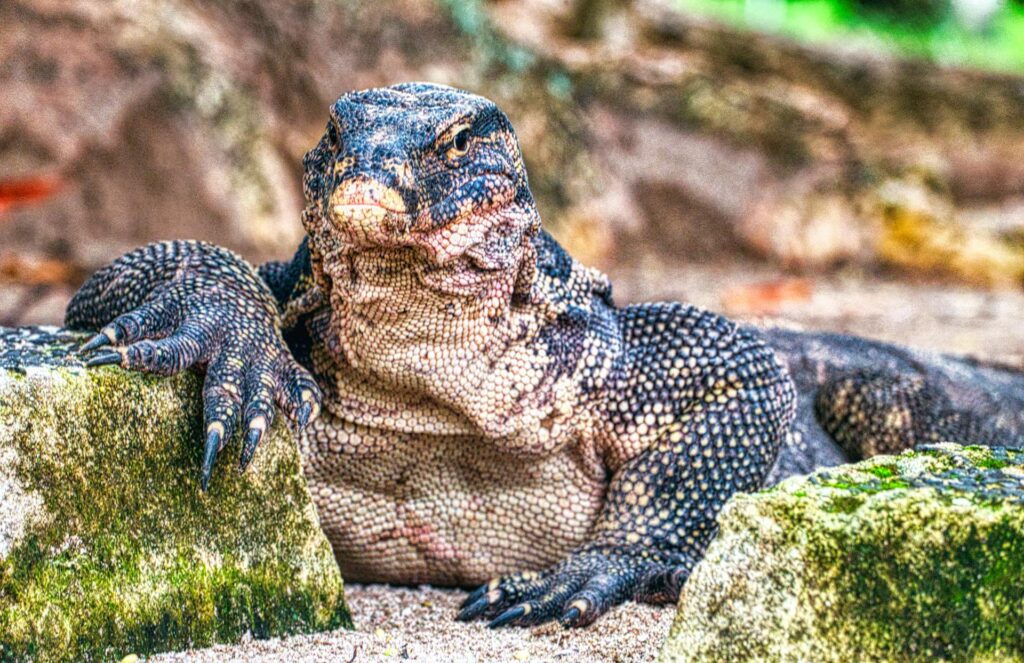
The record-breaking Komodo dragons represent remarkable examples of nature’s capacity to produce living wonders that capture our imagination.
These magnificent creatures, with their prehistoric dimensions and formidable capabilities, offer a tangible connection to Earth’s ancient past while simultaneously facing very modern threats to their existence.
As we continue to study and protect these extraordinary reptiles, we gain not only scientific knowledge but also a deeper appreciation for the diversity of life our planet supports.
The largest Komodo dragons stand as powerful symbols of wild nature at its most impressive—living dragons that, while not breathing fire or flying through the skies, exceed in reality what many cultures could only imagine in mythology.


